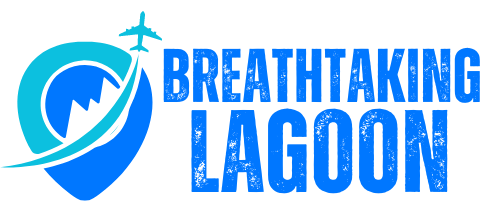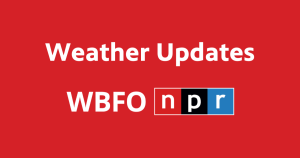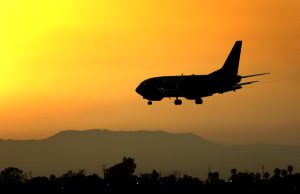The skies over Hawaii may look calm, but turbulence is building. Major U.S. airlines are issuing mixed financial forecasts, signaling growing uncertainty about economy class travel demand. For Hawaii, where tourism depends on these travelers from the mainland, this shift could mean fewer flights, higher airfares, and unexpected pressure on the already fragile travel ecosystem.
Multiple airlines have issued conflicting projections for 2025. One scenario assumes continued strong travel demand. The other anticipates economic pullback and reduced bookings, especially among non-premium flyers. This approach is unusual and highlights how little confidence these carriers have in forecasting travel behavior right now.
United Airlines this week included a second, more conservative outlook if macroeconomic conditions worsen. Delta, too, has pointed to declining demand on certain domestic leisure routes, particularly among economy-class travelers, the very segments that Hawaii depends on the most.
Unlike many mainland destinations, Hawaii has no drive-in visitors. Air service is the state’s sole travel lifeline. When carriers adjust capacity based on shifting consumer behavior, it reverberates throughout the Hawaii visitor economy.
These travelers book most flights, hotel rooms, and activities that power our island travel industry.
In recent updates, however, airlines have flagged softness in this core segment. Economic concerns like inflation, stock market volatility, and job insecurity are causing some potential travelers to pause or downgrade their vacation plans. That hesitation can equate to fewer bookings and more caution from airlines when setting future schedules.
Carriers won’t keep flying planes that aren’t essentially full across the Pacific. If they expect demand to fall, they’ll reduce frequency, remove routes, or shift to smaller aircraft. That drives up prices and reduces availability for travelers who do want to book.
What’s at stake could be more than short-term inconvenience. If economy-class demand continues to slip, it could structurally change the number and type of Hawaii flights available year-round.
Hotels in Hawaii are also taking note and preparing for a shifting landscape. As a result, hotels have moved aggressively into online marketing, ad buys, and dependence on booking platforms to continue to fill rooms. Discounted offers may become more common, but hotels are loath to move in that direction as that erodes margins. The industry is concerned about spending more to earn the same, or in some cases, less.
Hotels and the rest of Hawaii travel are watching airline patterns closely. Should flights disappear or prices spike, forward bookings will suffer. That would create unexpected downturns even during traditionally strong occupancy periods, like the upcoming summer months.
Hawaii has long benefited from Canadian and Japanese tourism. However, both markets have declined significantly, and there is no sign of a return.
Recent data shows Canadian arrivals are down more than 30 percent from pre-pandemic levels. Japanese arrivals remain more than 50 percent below what they were in 2019.
These create significant gaps in the Hawaii visitor count. International travelers have also tended to stay longer and spend more. Their absence has shifted the industry’s weight further onto U.S. domestic visitors, who are now also in question.
The Canadian pullback, in particular, has caught attention. Trade tensions, currency fluctuations, and broader uncertainty about travel costs contributed to the decline. Airlines have already responded by adjusting capacity. Fewer nonstop flights from Western Canada into Hawaii are anticipated going forward.
For Hawaii, this means two things: less economic diversity in its visitor base and even greater sensitivity to fluctuations in U.S. mainland travel trends.
The industry isn’t entirely powerless in the face of such change. Hawaii tourism leaders and businesses are already looking at ways to increase competitiveness, even as airlines may shift course.
A key approach is to expand off-peak and shoulder season promotions. If the value is right, travelers not tied to school calendars or summer holidays may be open to flexible booking. This could help smooth out seasonal gaps and maintain traffic during slower months. Will Hawaii travel respond with better value to attract those visitors?
Those hoping to travel to Hawaii this year can still enjoy the islands without getting caught in the turbulence.
Booking flights early remains one of the most effective ways to avoid price spikes. Flexibility on travel dates is always key to accessing lower fares, especially mid-week or during non-peak seasons.
Package deals that bundle hotel and airfare may offer better value this year, especially as hotels and travel platforms look to other ways to keep volume up despite uncertainty.
Have your travel plans for Hawaii stayed the same, or are they changing?
Get Breaking Hawaii Travel News
Comment policy (1/25):
* No profanity, rudeness, personal attacks, or bullying.
* Specific Hawaii-focus “only.”
* No links or UPPER CASE text. English only.
* Use a real first name.
* 1,000 character limit.
Your email address will not be published.
This site is protected by reCAPTCHA and the Google Privacy Policy and Terms of Service apply.
Copyright © 2008-2025 · Beat of Hawaii · All rights reserved.
All trademarks, logos and brand names are the property of their respective owners.
Website design and marketing by TechSpokes Inc.
Stay abreast of the latest island travel news, tips, deals, and more. Subscribe to our FREE newsletter and let Hawaii come to you. Mahalo!




